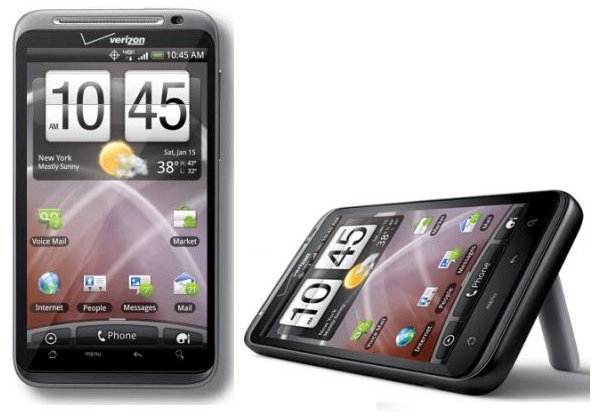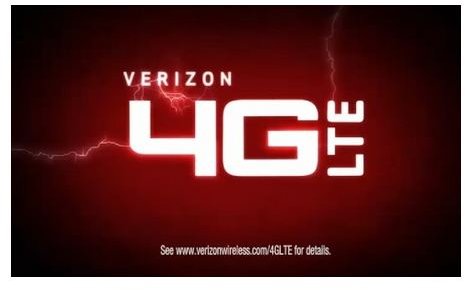HTC Thunderbolt - First Look at HTC's First Ever 4G Smartphone for Verizon
HTC Thunderbolt Review
The 2011 Consumer Electronics Show might as well have been called the 4G show, with many smartphone manufacturers unveiling new 4G smartphones. The HTC Thunderbolt is HTC’s entrance onto Verizon’s 4G LTE network. The HTC Thunderbolt is supposedly the phone that Verizon believes people have been “dreaming” about. That’s quite a bit to live up to and puts quite a lot of pressure on the HTC Thunderbolt.
HTC Thunderbolt Specifications:
- Dimensions: 4.8 x 2.6 x 0.52 inches (122 x 66 x 13.2 mm)
- Weight: 5.78 oz (164 g)
- Display: 4.3 inch WVGA TFT capacitive touchscreen display, 480 x 800 pixels
- Memory: 8 GB + 32 GB MicroSD
- OS: Android OS 2.2
- Processor: 1GHz MSM8655 Snapdragon
- Camera: 8 megapixel camera, 720p video recording, front facing 1.3 megapixel camera
- Connectivity: CDMA Dual Band (800/1900 Mhz)
- Data: 1xEV-DO rev.A, LTE
- Bluetooth: Bluetooth 2.1, Stereo Bluetooth
- GPS: GPS with A-GPS
- Battery: Li-Ion 1400 mAh
Design and Display (3 out of 5)

For those familiar with the HTC Desire HD, the HTC Thunderbolt should look very familiar. In fact, it’d be safe to say that the HTC Thunderbolt is designed almost exactly like the HTC Desire HD. The biggest difference being that the HTC Thunderbolt can access Verizon’s new 4G LTE network.
Starting off the HTC Thunderbolt has a 4.3 inch WVGA TFT capacitive touchscreen display covering the front of the phone. Below the display are the usual set of Android shortcuts for menu, home, back and search. Up above is a small 1.3 inch megapixel front facing camera used for video chatting. Placed on the right is the volume rocker, opposite resides the microUSB, and on top the 3.5 mm headphone jack and power / lock button. The HTC Thunderbolt is rounded out on the back with an 8 megapixel camera and dual LED flash. Underneath, the camera on the back, is a small kickstand that can be lifted up from the back. It’s nicely designed and adds functionality to the HTC Thunderbolt.
The 4.3 inch display is decent and the viewing angle is fairly wide, however, compared to the likes of the Samsung Continuum on Verizon’s network, which utilizes Super AMOLED technology, it is a bit lacking. Also, with the likes of the iPhone and the soon to be released Motorola Droid Bionic on Verizon’s network, one has to wonder how well the HTC Thunderbolt will take off.
Hardware and Software (3 out of 5)
The HTC Thunderbolt comes with a 1 GHz Snapdragon processor and comes preloaded with Android 2.2 and HTC Sense. This is really no different than many of the other HTC, Motorola, and Samsung powered smartphones currently released. The recently announced Motorola Droid Bionic features a dual core processor, however, it showed signs of lag. The HTC Thunderbolt, with its single processor actually seemed to perform better. No noticeable lag and everything seemed to run without a hitch, including Adobe Flash.
The HTC Thunderbolt also comes with 8 GB of onboard storage, along with an expandable microSD slot. You can grab a 32 GB microSD and really expand the storage of the HTC Thunderbolt. One of the problems with Windows Phone 7 handsets, such as the HTC Surround 7, is that they don’t have expandable microSD slots. It seems the freedom of Android powered handsets has given them the edge in storage space.
User Interface (3 out of 5)
The HTC Thunderbolt, like all other Android powered handsets, is very easy to pick up and use. The touch interface is not daunting and as it is touch, very easy to understand. HTC Sense is a third party proprietary overlay made by HTC to enhance the user experience for Android. Similar to Motorola’s MotoBLUR and Samsung’s TouchWiz UI, the HTC Sense UI is a nice addition, but ultimately hurts the end user as these third party overlays delay over the air updates of the latest and greatest version of Android.
The 1 GHz Snapdragon processor runs Android 2.2 with Sense UI smoothly and it feels very much like the user experience for most other HTC smartphones. Nothing earth shattering to make the HTC Thunderbolt stand out. Overall, the user interface is simplistic, easy to learn and easy to master. Everything has been kept simple, changing themes is also as simple as going into your settings and swiping around to select the theme you want.
Features (4 out of 5)
The HTC Thunderbolt has the familiar Android feature set of games and applications, along with Verizon

specific applications such as VCast. Currently, it looks as though the HTC Thunderbolt has Google defaulted, unlike some of their smartphones that have been defaulted to Bing, and Microsoft counterparts to Google applications. Hopefully the HTC Thunderbolt continues with this default. Since the HTC Thunderbolt is powered by Android 2.2, it can access Flash based websites and can use Adobe Flash player. In addition, it also has access to the Android Market, the gateway to over 100,000 applications and games.
The front facing camera has also not been skimped on, offering an impressive 1.3 megapixels. This means your video chatting over the HTC Thunderbolt will be a little clearer for those on the other end. The 8 megapixel camera on the back with dual LED flash is also a welcome addition to a world of 5 megapixel camera phones. The kickstand is also an interesting little feature that HTC seems to be pursuing on their entire line up of smartphones. It’s a nice subtle addition to the HTC Thunderbolt, and allows it to be used as a media player for long trips where you want to keep the phone hands free.
The Final Verdict (3 out of 5)
Overall, though the HTC Thunderbolt packs quite a punch, it may very quickly get lost in the shuffle. One of the greatest weaknesses of creating so many new phones running on virtually the same operating systems is that there isn’t a lot of room for creativity. The Motorola Atrix 4G introduced a whole new world for smartphones through the use of docking. However, the HTC Thunderbolt doesn’t offer that kind of uniqueness.
Stand an HTC Thunderbolt next to an HTC Desire HD, Motorola Droid X, or a Samsung Fascinate and really, there’s not much to distinguish the phones. They run the same powerful processors, the same Android OS, just with different overlays, and offer varying degrees of viewing angles. Without a unique feature set to distinguish the HTC Thunderbolt, it really just falls on the ‘Average’ side of the house. However, just because it’s average, doesn’t mean it’s a bad phone. The HTC Thunderbolt will most likely hit hard then falter as newer generation 4G smartphones come out.